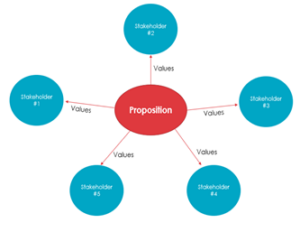
Article
4 ways to empathize in a less conventional way
Why is empathy an important aspect of your marketing job? And how do you apply this to your prospects and customers? We share our takeaways from the Design Thinking Conference in Amsterdam, as well as 4 unconventional ways to empathize with your audience
In general, we consider empathy to be a positive trait. It allows you to put yourself in the shoes of someone else—to experience another person’s feelings, needs, or pains.
Now think about what would happen if a surgeon thought about how much pain he might be causing his patients by cutting through their skin. Would he be able to do a good job if he was feeling someone else’s pain? It is necessary to have empathy in certain jobs, but it is just as necessary to be able to turn off this switch.
At the Design Thinking Conference in Amsterdam, we learned that empathy is neither good nor bad. Empathy is neutral. It’s simply something that exists. It’s how you put empathy into action that determines whether it develops into compassion for a good cause. Empathy is more important than ever for you as a marketer or innovator. It’s the only way to connect with your audience, find out what their real needs are, and figure out how to solve their problems.
How to empathize with your audience
One person possesses more empathy than the other. You can, however, learn techniques for empathizing with your audience. These methods can be used in the early stages of the design thinking process (where you try to put yourself in the shoes of your customer to better understand their needs), but they can also be used later on.
1. Observe to empathize
Go to a store, a playground, a cash-out machine… whatever topic interests you. Don’t ask any questions: simply show up and take a look. The difference between asking someone what they would do or value and how they behave in their daily life is vast. It’s referred to as declarative versus behavioral data.
When asked to explain something, people tend to overthink, rationalize, and ultimately behave differently than they would in reality. This can be seen both offline and online. Using tools such as Hotjar recordings, you can observe how your prospects or customers act online. These are recordings of visitors interacting with your website. You can see which links users click on, how far down they scroll, and what they ignore. If you pay attention, you’ll notice patterns that you have never seen before. This will help you discover issues you were previously unaware of.
2. Give space to empathize
How much time have you spent developing interview guides without discovering new needs of the audience you are studying? When you ask questions to validate assumptions, you are already providing too much direction. But what if you have to ask a question you didn’t realize you needed to ask in order to discover the unknown?
We invite you to try a different method next time! Pose an open question to someone. They’ll begin to explain, and then there will be silence. Allow for silence and encourage them only with your body language. You’ll notice that the interviewee will frequently fill in the blanks and answer questions you may have had in your head, but didn’t think to ask.
Keep nudging them without asking questions, and you’ll be surprised at how much you’ll have learned by simply giving them space. More importantly, this approach will reveal questions you didn’t know you needed to ask in your guided interview script.
Consider the following illustration: To uncover specific user needs for a financial service, you’ll start by asking, “What do you think about bank X?” Someone is likely to respond that they don’t know or don’t have an opinion because they don’t really know the bank as they aren’t a customer. When given space, they may begin to talk about their own bank, why they are a customer of that bank, what products they have, and what they like or dislike about it. As you go on, you might be surprised by the stories that come up about that person’s views on banking and finance.
3. Use various perspectives
It’s natural to look from your own perspective when empathizing. Have you ever imagined yourself as a transgender man having to use a public restroom while menstruating? Or have you ever considered medical machines treating a woman with prostate problems? It’s not surreal, but rather today’s reality. When designing solutions, keep multiple perspectives in mind and literally look through different lenses to approach the problem at hand.

The Living Value Map is a tool that can assist you.
– Identify all potential stakeholders for your proposition
– List the benefits your proposition could provide to each stakeholder
This exercise will assist you in looking at the added value of your proposition from various perspectives, identifying growth opportunities, and determining added value for groups other than the primary target group that was chosen.
4. Design with minorities in mind
How often have you heard: “The solution we expect has to solve everyone’s needs, or at least appeal to as many people as possible.” When you design a solution for everyone, you are actually designing it for no one.
Consider Uber, which has added safety features to its app that are specifically designed for women. It exemplifies how a design for women can also benefit men. We are frequently asked to create one-size-fits-all solutions, but try to design for a minority or marginalized group instead. You’ll be amazed at how this solution evolves into a holistic solution that can better fit many more people.